Best Time for Mera Peak Climbing
Planning a Trip to Nepal?
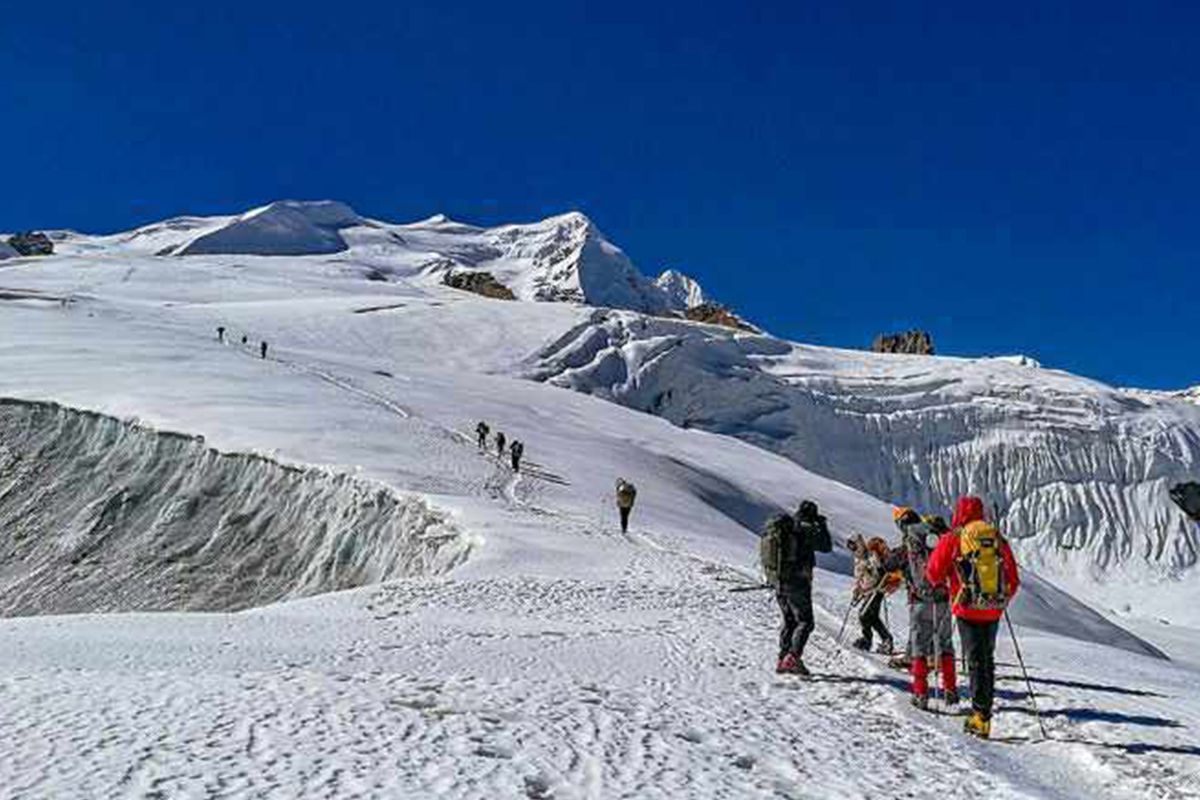
Mera Peak (6,476m) is one of Nepal’s most popular trekking peaks, offering adventurous climbers a chance to stand atop the highest permitted trekking peak in the country and witness breathtaking panoramas of Everest, Lhotse, Makalu, Cho Oyu, and Kanchenjunga. Although technically not as demanding as other Himalayan expeditions, reaching the summit of Mera Peak Climbing requires good physical fitness, proper preparation, and most importantly—choosing the right season. Weather and timing play a vital role in ensuring both safety and success.
If you are planning your climb, here is a complete guide to the best time for Mera Peak Climbing in Nepal, covering weather conditions, seasonal advantages, challenges, and practical tips to make the most of your Himalayan adventure.
- 1. Why Timing Matters for Mera Peak Climb
- 2. Mera Peak Seasons Overview
- 3. Best Months for Mera Peak Climbing
- 4. Seasonal Comparison at a Glance
- 5. Mera Peak Difficulty Level & Preparation
- 6. Sample Mera Peak Climbing Itineraries
- 7. 14-Day vs 18-Day: Which One to Choose?
- 8. Packing List & Gear Essentials for Mera Peak Climbing
- 9. Cost & Permit Information for Mera Peak Climbing
- 10. Expert Tips for Planning Mera Peak Climb
- Frequently Asked Questions (FAQ) – Mera Peak Climbing
- Conclusion
1. Why Timing Matters for Mera Peak Climb
- Stable weather and clear skies for panoramic Himalayan views.
- Safer trails and glacier conditions, minimizing the risk of avalanches or crevasses.
- Higher summit success rate, as climbers face fewer unpredictable obstacles.
- More enjoyable trekking experience, with comfortable temperatures and scenic landscapes.
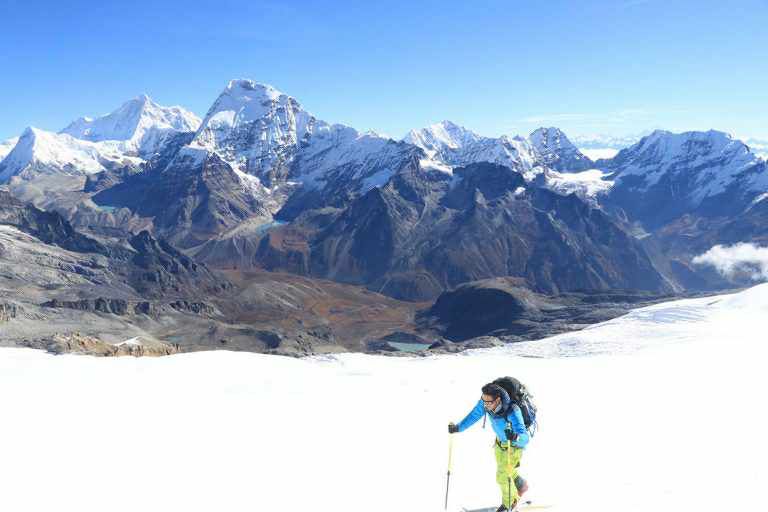
2. Mera Peak Seasons Overview
- Spring (March – May)
- Summer/Monsoon (June – August)
- Autumn (September – November)
- Winter (December – February)
2.1. Spring Season (March – May)
Why Spring is Best
- Stable Weather: Clear skies, less chance of storms compared to winter.
- Warmer Temperatures: Milder conditions at base camp and high camp compared to autumn.
- Rhododendron Blooms: Lower trails through Hinku Valley are colorful and scenic.
- Great Visibility: Stunning panoramic views of the Himalayan giants.
Challenges in Spring
- Afternoon clouds may develop, sometimes limiting mountain views.
- The route may be busier than in autumn, as spring attracts both trekkers and mountaineers.
- Snow conditions are generally favorable but can still be heavy in early March.
Weather Details
- Daytime (lower trails): 15–20°C
- High camp / summit nights: -10°C to -20°C
- Visibility: Generally excellent, especially in April–May
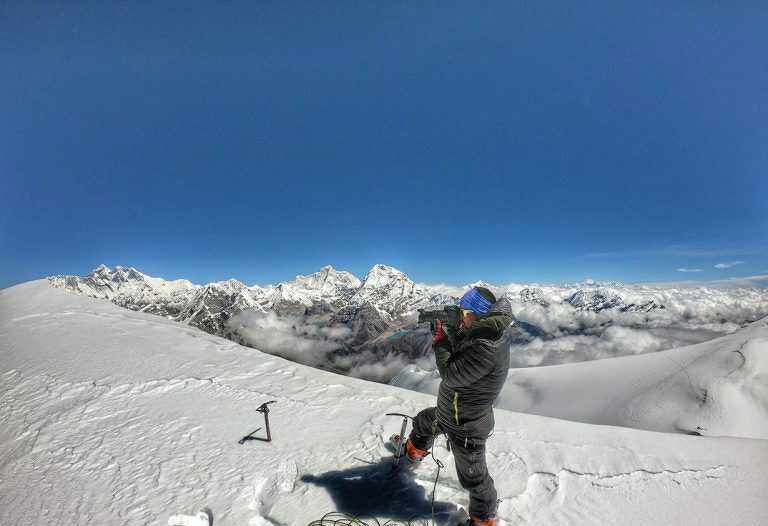
2.2. Autumn Season (September – November)
Why Autumn is Best
- Post-Monsoon Clarity: Skies are at their clearest after the summer rains.
- Stable Conditions: Minimal rainfall and snowfall, reducing risks of avalanches.
- Ideal for Photography: Crystal-clear mountain panoramas.
- Perfect Acclimatization: Moderate temperatures and long trekking days.
Challenges in Autumn
- October and November are peak trekking months in Nepal, so trails and teahouses may be crowded. Though Mera Peak itself is less busy than Everest Base Camp.
- Nights can be colder than in spring, especially in late November.
Weather Details
- Daytime (lower trails): 12–18°C
- High camp / summit nights: -15°C to -25°C
- Visibility: Best of the year, particularly in October
2.3. Summer/Monsoon Season (June – August)
Challenges in Summer
- Heavy Rainfall: Trails become muddy and slippery.
- Leeches and Insects: Common in lower forest sections.
- Landslide Risk: Increased along trekking trails.
- Poor Visibility: Clouds often block mountain views.
- Flight Delays: Lukla flights frequently disrupted by weather.
Weather Details
- Daytime (lower trails): 18–25°C
- High camp / summit nights: -5°C to -15°C
- Visibility: Often poor due to cloud cover
2.4. Winter Season (December – February)
Advantages of Winter
- Fewer crowds, giving a sense of solitude.
- Crystal-clear skies during stable spells.
Challenges in Winter
- Extreme Cold: Temperatures at high camp can drop below -30°C.
- Heavy Snowfall: Increases avalanche risk and makes the summit approach difficult.
- Shorter Days: Less daylight for trekking and acclimatization.
- Closed Lodges: Some teahouses on remote trails may shut down.
Weather Details
- Daytime (lower trails): 5–10°C
- High camp / summit nights: -20°C to -30°C
- Visibility: Good, but conditions are harsh
3. Best Months for Mera Peak Climbing
- Late March – Early May (Spring)
- Late September – Early November (Autumn)
These months combine the best of stable weather, safe conditions, and beautiful Himalayan views.
FURTHER READ IN DETAILS “Peak Climbing in Nepal : The Ultimate Guide for Adventure Enthusiasts”
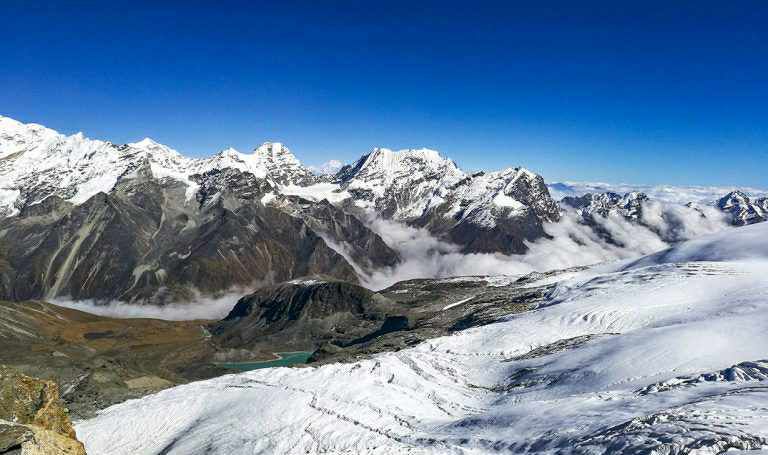
4. Seasonal Comparison at a Glance
| Season | Pros | Cons | Best For |
| Spring (Mar–May) | Stable weather, warmer, flowers in bloom | Busy trails, some afternoon clouds | Climbers wanting warmer summit conditions |
| Autumn (Sep–Nov) | Clear skies, best visibility, stable | Cold nights, crowded trails | Photographers, first-time climbers |
| Summer (Jun–Aug) | Fewer crowds | Rain, leeches, flight delays, poor visibility | Not recommended |
| Winter (Dec–Feb) | Solitude, clear skies | Very cold, heavy snow, tough conditions | Experienced climbers only |
5. Mera Peak Difficulty Level & Preparation
Difficulty Level
- Technical Skills: Mera Peak is considered a non-technical climb, requiring only basic mountaineering skills. The standard route involves glacier walking with the use of crampons, ice axe, and ropes, but no advanced rock or ice climbing.
- Physical Demands: Daily trekking of 5–7 hours and a long summit push of 10–12 hours demand excellent stamina and endurance.
- Altitude Challenges: The biggest obstacle is the thin air at 6,000+ meters, which makes acclimatization essential.
- Weather Factor: Strong winds, snow conditions, and extreme cold near the summit can add difficulty even in the best climbing seasons.
Who Can Climb Mera Peak?
- Trekkers with prior high-altitude experience (above 4,000 m)
- Climbers with good physical fitness and endurance training
- Beginners who are willing to undergo pre-climb training with professional guides
Preparation Tips for Success
- Physical Training: Start endurance training 2–3 months in advance—include cardio (running, hiking, cycling), strength training, and stair climbing with a backpack.
- Altitude Training: If possible, do high-altitude treks (Everest Base Camp Trek, Annapurna Circuit Trek, Langtang Trek) before attempting Mera Peak.
- Gear Practice: Learn how to use crampons, harnesses, and ice axes before the climb. Many guides provide training in Khare.
- Mental Preparation: Be ready for long days, cold nights, and unpredictable weather. A positive mindset plays a huge role in summit success.
- Guided Expeditions: Always climb with a licensed guide or operator like us, Raj Bala Treks & Expedition—we handle permits, logistics, safety, and rescue if needed.
6. Sample Mera Peak Climbing Itineraries
18-Day Mera Peak Climbing Itinerary
- Welcome at Tribhuvan International Airport.
- Transfer to hotel, gear check, briefing, and permit preparation.
- Overnight in Kathmandu.
- Early flight to Lukla (subject to weather).
- Begin trek towards Paiya via forests and small Sherpa villages.
- Trek time: 4–5 hrs.
- Cross bridges and ascend through rhododendron and bamboo forests.
- Reach the beautiful farming village of Panggom.
- Trek time: 5–6 hrs.
- Steady climb through forested ridges.
- First views of Mera Peak.
- Trek time: 4–5 hrs.
- Trek through the Makalu Barun National Park.
- Spot wildlife such as Himalayan Thar or red panda if lucky.
- Trek time: 6–7 hrs.
- Enter the Hinku Valley.
- Trek through bamboo and pine forests.
- Overnight in Kothe.
- Trek along the Hinku Khola river.
- Scenic views of Kusum Kanguru and Mera Peak.
- Trek time: 3–4 hrs.
- Rest and short hikes for acclimatization.
- Explore Sabal Tsho Lake or nearby moraine ridges.
- Ascend steadily to Khare (base of Mera Peak).
- Magnificent views of Mera Glacier.
- Trek time: 3–4 hrs.
- Skills practice with crampons, ropes, ice axe, and harness.
- Preparation for glacier and summit day.
- Steep ascent on rocky trails and glaciers.
- Overnight at high camp with views of Everest, Lhotse, and Makalu.
- Trek time: 6–7 hrs.
- Start around 2:00–3:00 am.
- Gradual climb on glacier using ropes, crampons, and ice axe.
- Reach the summit for panoramic views of Everest (8,848 m), Kanchenjunga, Cho Oyu, Lhotse, and Makalu.
- Descend back to Khare.
- Total time: 10–12 hrs.
- Extra day for summit attempt in case of bad weather or altitude-related delays.
- Descend back along the Hinku Valley.
- Trek time: 6–7 hrs.
- Climb through forested ridges.
- Trek time: 6–7 hrs.
- Cross Zatrwa La Pass (4,600 m) with final Himalayan views.
- Descend to Lukla.
- Trek time: 6–7 hrs.
- Morning flight to Kathmandu.
- Rest, shopping, or cultural sightseeing in the city.
- Airport transfer for onward journey or extension tours (Pokhara, Chitwan, etc.).
Key Itinerary Highlights
- Acclimatization Days: At Thaknak and Khare for altitude adaptation.
- Summit Push: One of Nepal’s most scenic summits, with 360° Himalayan views.
- Flexible Planning: Includes a contingency day for summit weather window.
- Cultural Touch: Passes through Sherpa villages, monasteries, and forests before reaching the glacier.

14-Day Mera Peak Climbing Itinerary
- Airport pick-up and transfer to hotel.
- Evening briefing, gear check, and permit preparation.
- Scenic flight to Lukla.
- Short trek to Chutanga through rhododendron and pine forests.
- Trek time: 3–4 hrs.
- Challenging climb over Zatrwa La Pass with stunning mountain views.
- Descend to Thuli Kharka.
- Trek time: 6–7 hrs.
- Trek down into the Hinku Valley.
- Follow the river and forests before reaching Kothe.
- Trek time: 6–7 hrs.
- Steady climb along the Hinku Khola.
- Views of Kusum Kanguru and Mera Peak.
- Trek time: 4–5 hrs.
- Ascend towards Khare, the base camp of Mera Peak.
- Trek time: 3–4 hrs.
- Rest and short hikes for altitude adjustment.
- Practice climbing skills (crampons, ropes, ice axe) with guides.
- Gradual ascent across Mera Glacier.
- Camp at High Camp with incredible views of Everest and Makalu.
- Trek time: 6–7 hrs.
- Early morning summit push (2–3 am start).
- Enjoy 360° views of Everest, Lhotse, Cho Oyu, Makalu, and Kanchenjunga.
- Return to Khare for overnight rest.
- Total time: 10–12 hrs.
- • Extra day in case of bad weather or delayed summit attempt.
- Descend through the Hinku Valley.
- Trek time: 6–7 hrs.
- Ascend through alpine forests.
- Trek time: 6–7 hrs.
- Cross Zatrwa La Pass again, descend to Lukla.
- Trek time: 7–8 hrs.
- Early morning flight from Lukla to Kathmandu.
- Continue onward journey or extend stay in Nepal.
Key Features of the 14-Day Itinerary
- Faster approach via Zatrwa La Pass, cutting trek days.
- Includes one acclimatization & training day at Khare for safety.
- Contingency day allows flexibility for summit success.
- Best suited for trekkers with good fitness and limited time.
7. 14-Day vs 18-Day: Which One to Choose?
| Feature | 18-Day Itinerary | 14-Day Itinerary |
| Acclimatization Days | 2 (Thaknak & Khare) | 1 (Khare only) |
| Summit Reserve Day | Yes | Yes |
| Route Style | Gradual via Hinku Valley | Direct via Zatrwa La Pass |
| Best For | First-time climbers, cautious trekkers | Experienced trekkers with limited time |
| Success Rate | Higher (more acclimatization) | Moderate (faster pace) |
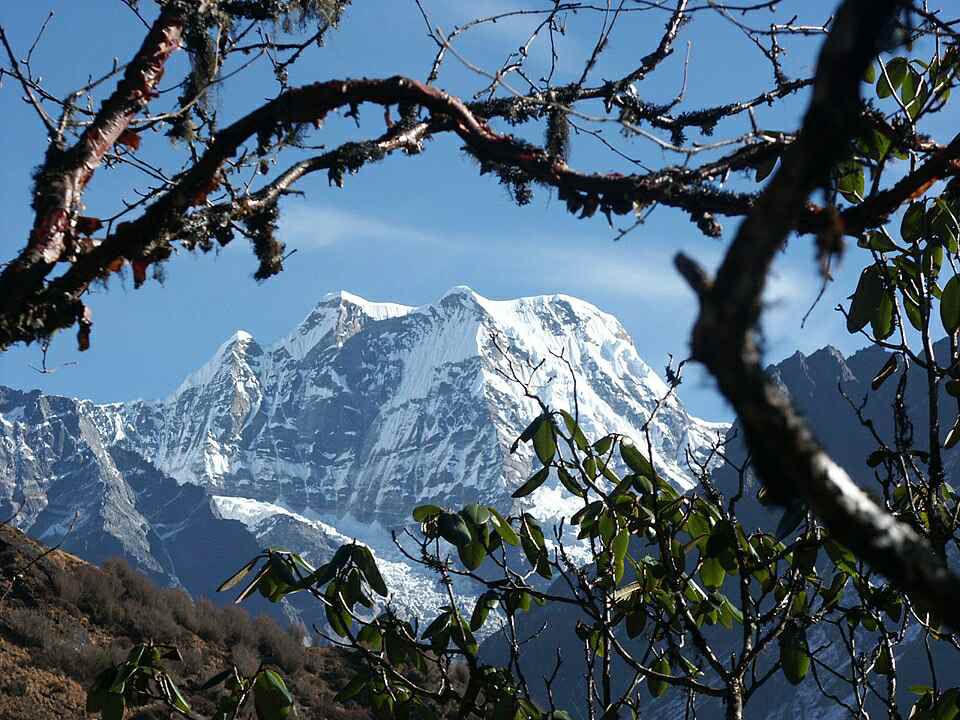
8. Packing List & Gear Essentials for Mera Peak Climbing
Clothing
- Base Layers (Moisture-Wicking): 2–3 thermal tops & bottoms
- Insulating Layers: Fleece jacket, down jacket (rated for –20°C)
- Outer Layer: Waterproof/windproof shell jacket & pants (Gore-Tex or similar)
- Trekking Pants & Shirts: Lightweight, quick-dry
- Gloves: Inner gloves, insulated climbing gloves, and waterproof shell gloves
- Headwear: Warm hat, sun hat, buff/scarf, balaclava
- Footwear:
- Trekking boots (well broken-in)
- Mountaineering boots (double or insulated for summit day)
- Camp shoes/sandals
- Warm trekking socks + liner socks
Climbing Gear
- Climbing harness
- Crampons (compatible with mountaineering boots)
- Ice axe
- Helmet
- Carabiners & ascenders (as provided by guides)
- Fixed rope & safety equipment (organized by expedition leader)
Accessories & Equipment
- Trekking poles
- Headlamp with extra batteries
- Sunglasses (UV protection, glacier-rated)
- Sleeping bag (–20°C rating recommended)
- Backpack (40–50 L for daily use)
- Duffel bag (carried by porters)
- Hydration system (camelback or water bottles with insulation)
- Gaiters (for snow conditions)
Personal Essentials
- Personal toiletries & biodegradable soap
- Sunscreen (SPF 50+), lip balm with UV protection
- First aid kit (diamox, blister care, painkillers, personal meds)
- Water purification tablets/drops
- Energy snacks (nuts, chocolate, protein bars)
- Power bank & charging cables
- Camera/GoPro for capturing memories
Optional but Useful
- Lightweight down pants for cold camps
- Thermos flask (for warm drinks on summit push)
- Book/Kindle for evenings
- Trekking towel & wet wipes
Pro Tip: Many trekkers prefer to rent technical gear in Kathmandu to save costs and avoid carrying heavy equipment from home. However, personal items like boots, gloves, and clothing should always be your own for comfort and fit.
SEE AN INTERESTING READ “Where is Mount Everest?”
9. Cost & Permit Information for Mera Peak Climbing
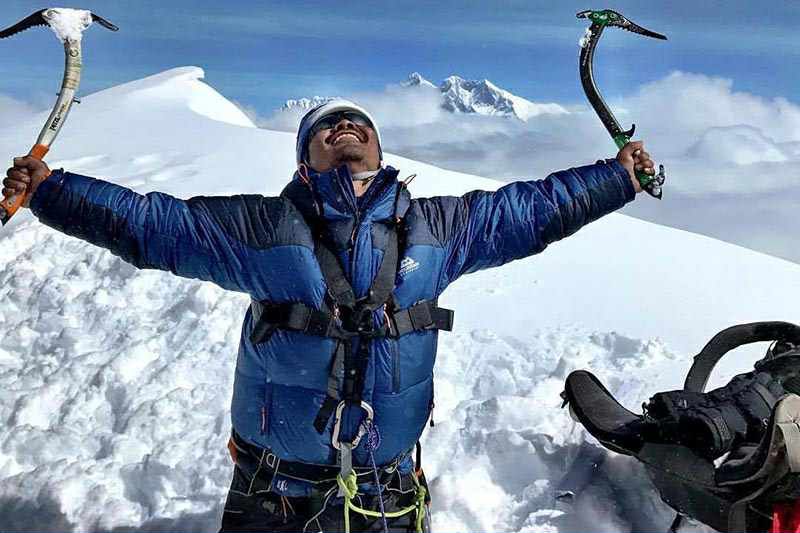
9.1. Mera Peak Permit Fees (NMA Climbing Permit)
- Spring (Mar–May): USD 250 per person
- Autumn (Sep–Nov): USD 125 per person
- Winter (Dec–Feb): USD 70 per person
- Summer/Monsoon (Jun–Aug): USD 70 per person
9.2. Other Required Permits
- Makalu Barun National Park Permit: NPR 3,000 (approx. USD 25)
- Local Area Permit (Rural Municipality Fee): NPR 2,000 (approx. USD 15)
- TIMS Card (Trekkers’ Information Management System): USD 20 (sometimes included by trekking agencies)
9.3. Domestic Flights
- Cost: USD 200–220 one way (USD 400–440 round trip)
9.4. Guide & Porter Costs
- Climbing Guide (Mandatory for Mera Peak): USD 30–35/day
- Porter (Optional but recommended): USD 20–25/day (carries up to 20–25 kg)
9.5. Gear Rental Costs in Kathmandu
- Mountaineering Boots: USD 8–10/day
- Crampons: USD 5/day
- Ice Axe: USD 5/day
- Harness & Helmet: USD 5–7/day each
- Down Jacket & Sleeping Bag: USD 1–2/day
9.6. Total Trip Cost (Estimated)
- Budget Package (Basic Tea House + Climb Support): USD 2,000–2,500
- Standard Package (Guided, all permits, Lukla flights, meals, logistics): USD 2,500–3,500
- Premium Package (Private guide, better accommodation, contingency, extra services): USD 3,500–4,500+
10. Expert Tips for Planning Mera Peak Climb
- Acclimatization is Key: Follow a gradual itinerary with rest days to reduce altitude sickness risk.
- Hire a Licensed Guide: Nepal requires certified guides for trekking peaks—guides also ensure safety on glaciers and summit routes.
- Gear Up Properly: Down jacket, 4-season sleeping bag, crampons, ice axe, harness, and mountaineering boots are musts.
- Flight Flexibility: Weather can delay Lukla flights—plan buffer days.
- Insurance: Get travel insurance that covers high-altitude rescue and evacuation.
- Training: Start cardio, endurance, and strength training at least 2–3 months before your climb.
LEARN MORE ABOUT “Trekking in Nepal: Best Routes for Autumn 2025 & Spring 2026”
Frequently Asked Questions (FAQ) – Mera Peak Climbing
- Autumn: Clear skies, cold nights, minimal rainfall.
- Spring: Warmer days, rhododendron blooms, occasional clouds.
- Monsoon: Wet, slippery, poor visibility.
- Winter: Very cold, risk of heavy snow; best for highly experienced climbers only.
Conclusion
The best time for Mera Peak climbing is during autumn (Sept–Nov) and spring (Mar–May). These seasons offer the most stable weather, safest conditions, and clearest Himalayan panoramas.
While monsoon and winter climbs are possible, they are only suitable for seasoned climbers ready to face additional risks. For most adventurers, planning a climb in autumn or spring will maximize success and enjoyment.
Mera Peak may be challenging, but with the right timing, preparation, and guidance, it rewards climbers with one of the most unforgettable Himalayan experiences.
CONTACT US today to explore itineraries, custom options, and dates that work for your group or solo travel plans!
Follow us on Facebook and Instagram and plan your climbing trip in Nepal with us.


